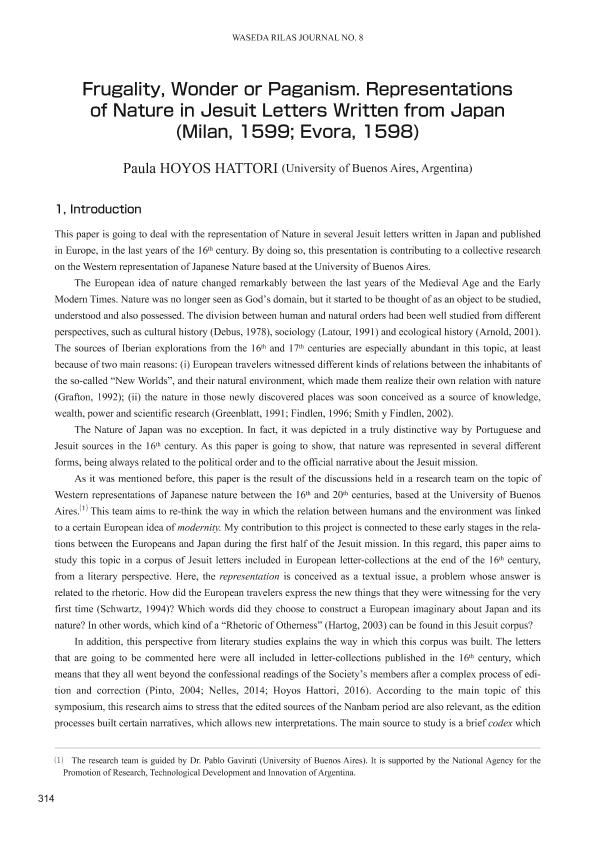Artículo
Frugality, Wonder or Paganism: Representations of Nature in Jesuit Letters Written from Japan (Milan, 1599; Evora, 1598)
Fecha de publicación:
10/2020
Editorial:
University of Waseda. Research Institute for Letters, Arts and Sciences
Revista:
Waseda Rilas Journal
ISSN:
2187-8307
Idioma:
Inglés
Tipo de recurso:
Artículo publicado
Clasificación temática:
Resumen
This paper is going to deal with the representation of Nature in several Jesuit letters written in Japan and published in Europe, in the last years of the 16th century. By doing so, this presentation is contributing to a collective research on the Western representation of Japanese Nature based at the University of Buenos Aires. The European idea of nature changed remarkably between the last years of the Medieval Age and the Early Modern Times. Nature was no longer seen as God’s domain, but it started to be thought of as an object to be studied, understood and also possessed. The division between human and natural orders had been well studied from different perspectives, such as cultural history (Debus, 1978), sociology (Latour, 1991) and ecological history (Arnold, 2001). The sources of Iberian explorations from the 16th and 17th centuries are especially abundant in this topic, at least because of two main reasons: (i) European travelers witnessed different kinds of relations between the inhabitants of the so-called “New Worlds”, and their natural environment, which made them realize their own relation with nature (Grafton, 1992); (ii) the nature in those newly discovered places was soon conceived as a source of knowledge, wealth, power and scientific research (Greenblatt, 1991; Findlen, 1996; Smith y Findlen, 2002)...
Palabras clave:
Representation
,
Nature
,
Jesuit Letters
,
Japan
Archivos asociados
Licencia
Identificadores
Colecciones
Articulos(SEDE CENTRAL)
Articulos de SEDE CENTRAL
Articulos de SEDE CENTRAL
Citación
Hoyos Hattori, Paula; Frugality, Wonder or Paganism: Representations of Nature in Jesuit Letters Written from Japan (Milan, 1599; Evora, 1598); University of Waseda. Research Institute for Letters, Arts and Sciences; Waseda Rilas Journal; 8; 10-2020; 314-320
Compartir




